Prospects for the development of turretless tank
At the end of the 70s in Sweden, for the first time, a lifting installation of the cannon was proposed, which provided a good view of the tank commander "from the top point" while the gun was raised and aimed to open fire. This main tank is a very small target when firing from behind cover, and that is necessary for firing a shot. In this case, it is not necessary to move the car to ensure a horizontal exit from the enemy's observation. If some restrictions on hitting targets located on the flanks are acceptable, then in this case, you can resort to automatic loading directly from the rear of the hull. For such a car, it is enough to have only 2 crew members. However, a 3rd crew member may be required to support longer continuous operations.
The success of the development of the layout of a turretless tank will depend on the solution of the problem of integrating the horizontal aiming mechanism and, the gun, the gun lifting mechanism, vertical guidance (elevation and declination), recoil devices and aiming and observation devices in one combined installation of minimum dimensions, which could be installed and removed from the body as a whole. This combined unit, once created, will be able to acquire significant export potential, since it can be installed on simple chassis designed and manufactured by other countries.
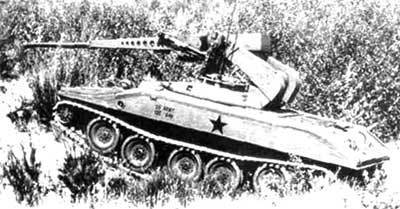
Figure: 1. Experimental KLKE (Elevated Kinetic Energy), armed with a 75mm Ares cannon mounted on an M551 chassis. This is possibly the most sophisticated mechanical cannon lift system ever rigorously tested. Despite the relatively large advantages, this configuration proved to be more acceptable for light tank destroyers than for full-size main tanks.
Tank tower
The purpose of the turret is, of course, to provide horizontal guidance of the gun for firing in any direction without the need to turn the vehicle body. The turret also allows the commander to conduct all-round observation of the highest point of the vehicle, providing all-round visibility and target detection in any direction. The armored turret also protects the breech and recoil devices from direct enemy fire and shrapnel. The crew located in the turret can not only manually load the cannon, but also troubleshoot operational problems, having access to the breech.
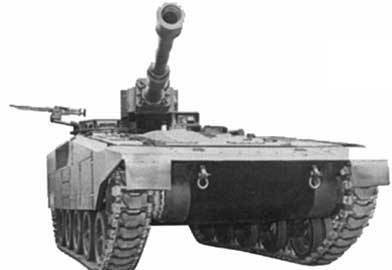
Figure: 2. The armored weapon system ACS (Teledyne) with a 105-mm M-88 cannon, installed in the Peledyne SNS mini-tower, was originally developed under the X-M4 program of the US Army, is currently not being developed
Without a doubt, the tank turret has a reserve for further improvement, in principle this refers to the introduction of an automatic loading mechanism and the placement of two turret crew members on opposite sides of the gun. The design used in the French swinging tower, which was developed in the 50s / 1 /, was used for tanks of the 60s / 2 / and will be used on the new French main tank AMX "Leclerc" / 3 /.
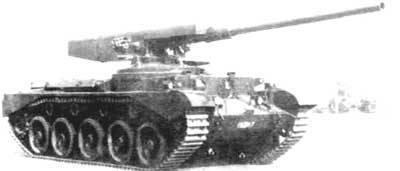
Figure: 3. The idea behind weapons was first implemented on the British experimental COMRES model with a 75-mm cannon based on the COMET tank. Of course, the technology of automatic loaders and surveillance systems that existed at that time was at such a low level that it did not generally meet the requirements for an armored combat vehicle.
For Russians, ammunition of the first stage is placed in a carousel-type conveyor in the lower part of the fighting compartment, where they are almost completely invulnerable from enemy fire, but if there is a through penetration of the armor, this can lead to a fire and to the complete destruction of the vehicle. In the main tank "Leclerc", as well as in the American tank "Abrams" and the German "Leopard-2", ammunition of the first stage will be placed in the recess of the tower, ie. higher and thus will be more vulnerable, but they can be isolated from the fighting compartment using an armored partition in such a way that the propellant gases of the explosion are discharged upward or backward in the event of a penetration of the armor.
The use of an automatic loader and a change in the placement of crew members determine the possibility of obtaining a smaller projection of the tower and thereby a smaller target hit by the enemy - mainly from the front when the tank is firing from behind cover. At the same time, the tower will have enough free space for each crew member to accommodate overview displays (VDV) and turret control devices, and each crew member will have their own set of observation devices and an exit hatch. Two workplaces in the tower will actually duplicate one another, since each of the crew members can perform a circular view or hit targets, and work together to control the tower's armament and distribute tasks among themselves depending on the changing tactical situation / 4 /.
Both workplaces in the tower can even be equipped with machine controls, so that the movement of the machine can be controlled from the tower, mainly when the machine is not firing and the gun is on the stopper in a marching manner.
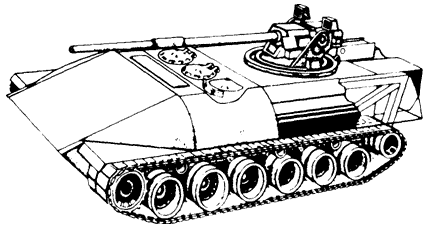
Figure: 4. Sketch of an imaginary possible version of the future close combat vehicle planned in the USA FCCV (Future Close Combat Vehicle) - a family of modular combat vehicles with outboard weapons. The car will have three seats for the crew, located in a row; the commander and gunner are located in front of their display screens, depicting the surrounding area in an enlarged view (two optronic sensors are visible on the sketch with the gun trunnions)
Finally, this two-man turret with an automatic loader can be installed on a traditional hull with a stern engine and a new type of hull with a front engine and aft hatch, as implemented on the Israeli Merkava tank / 5 /. An experimental prototype with a new configuration was built in Germany under the VTE index, the Americans also plan to apply the front engine placement in the program for creating promising integral chassis and a family of armored vehicles. In this case, the ammunition can be placed behind an armored bulkhead at the very rear of the hull, where it will be better protected and where it is better to replenish it.
The conclusion of experts
Although the tower continues to be in demand with customers as a means of providing a combination of advantages such as circular movement of weapons, the possibility of an all-round view from the top point, protection of the gun and accessibility to it for performing the required work, and despite the fact that it can be improved by installing automatic loader and changing the placement of crew members, the opinion of experts is not in favor of it because of its size and weight, and mainly because it is a large target that will be hit by the enemy when firing from behind cover. The opinion of experts is convincing that at present a significantly smaller vehicle with the smallest possible crew is required in order to be able to strengthen the armor protection, which will significantly increase the survivability of the tank. Such a machine will allow the crew to sit in the hull, where they will be better protected; the projection that will be visible when shooting from behind cover will be reduced. These views were originally expressed in the International Defense Revieww # 2/1982 by an editorial staff member in his article: "The design of battle tanks - some thoughts about the future", which analyzes the views, opinions of a group of international tank specialists who advocate the idea of a small-sized vehicle with out-of-armory about the automatic loader, the compact placement of the crew and the very creation of the smallest target for enemy fire.
Around the same time, Rolf Hilmes, a specialist at the Federal Directorate for Arms Supply (FRG), wrote a series of articles in the journal Soldat und Technik under the general title "The Thirty Years (1950 -1980) of Tank Development" - the results of these publications were published in issue No. 5/1983 in overview: what can be done to rework tanks. He made a proposal essentially the same as Jenkiz, which was discussed above - pointing to a much smaller machine with outboard weapons. Most recently, Graduate Engineer Hilmes reiterated this idea in "Main Tank Development Perspectives" published in NATO's sixteen Nations issue 2/1987.
Further fundamental contributions to the problem under discussion were made later in the books of Richard Simpkin and especially in the series of articles for this journal (issues 11/82, 5/83, 5/85, 1/86, 4/86 and 11/86). In two publications in 1986, it is argued that specialists are abandoning the tank turret. The first was received in London in October from the director of the Vickers research center, the second in November from Dr. Philip Lett, vice president of LSD (General Dynamics), at the Symposium on the Development of Tank and Armored Vehicle Technology in China (Beijing) ... both publications emphasized a significant reduction in the volume of the vehicle and the layout of the placement of the crew in the hull.
Figure: 5. Experimental layout for SRV research. used in the United States to test various options for the main tank layout with a crew located in the vehicle hull. The option chosen in this way should be evaluated by installing a TTV on an experimental tank, which is a modernized M-1, equipped with an automatic loader and carried out weapons
The experts' position is based on the desire to eliminate the disadvantages inherent in tank turrets both with manual loading and with automatic loaders - this is mainly the size of the target that they represent and will represent. Specialists began to abandon tank turrets even in existing designs, providing for the installation of an automatic loader / 6 /. They are "out of the game" and are exploring a reckless tank option.
Possible alternatives
An alternative arrangement of the installation of a gun instead of a turret with manual or automatic loading is usually based either on the variant of the Swedish tank "s", or on one of the variants of the carried armament. In both cases, the tank will cease to exist, consisting of two separate parts - the hull and the turret, it will be replaced by a single-unit object of the most, possibly, simple form, which will be easier to manufacture, more easily controllable on rough terrain and with greater opportunities for strengthening passive and active protection.
The cannon of the tank "s" fixed in the hull provides the commander with a vital upper all-round view, protects the breech of the gun with armor and provides access to it in case of serviceability. To increase invulnerability, it is possible to have a front-engine arrangement, stowage of ammunition in an isolated compartment and the presence of an exit aft hatch in the hull.
However, with the "s" tank layout, aiming the gun at the target requires turning the entire vehicle, which can be difficult in difficult ground conditions and even impossible when the tank is among obstacles. For a tank of type "s" it will be difficult to fire at moving targets, and it will be impossible to fire on the move, except for shooting straight ahead. These disadvantages could be somewhat reduced by giving the gun a small horizontal angle of rotation relative to the hull, but this will certainly entail complicating the entire installation of weapons. Thus, the main problem of the "s" tank is the way of aiming the gun along the horizon, especially at large angles, which are easily achievable by installing the gun in a conventional turret.
The complete opposite of the "s" type tank is a tank with an extended armament, its main drawback is the lack of all-round visibility from the "top point", so the tank can be fired upon by the enemy before it can take a position convenient for observation and shooting. The installation of a rotating head of observation devices with a remote view from above above the armament, of course, will allow the tank commander to observe from the inside of the hull from the highest point of the vehicle, but this is only possible within a small sector at the present time, so the possibility of detecting targets ready to open on it is not excluded. the fire. To provide wider viewing angles, it will be necessary to develop more advanced electro-optical systems in order to enable the crew located in the hull to have the required observation sectors, and if the development and acceptability of observation systems are insufficient, the customer will abandon the removed weapons.
Nevertheless, the removed weaponry can be provided with circular rotation by installing it on a rotating pursuit, as is done on the American experimental model TTV / 7 /, or mounting it on a rotating carriage (pedestal), as done on the dock tank UDES-19 / 8/. When placing weapons on the chase, the tank will not be protected by armor / 9 / or will be mounted in an armored mini-tower, however, such a comprehensive booking will be necessary for a significant size, approaching the size of a conventional tower. "
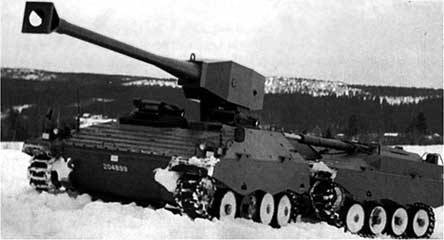
Figure: 6. For many years, the reckless Swedish tank "s" existed as the only representative of this configuration. However, most experts agree that many of the limitations imposed by the casemate layout make it completely unacceptable for the main tank in the specific environmental conditions of Sweden.
When mounting weapons on a pedestal, booking a gun can be less cumbersome and present a smaller target for the enemy when firing from behind cover / 10 /, however, separating the gun from the hull will lead to greater difficulties in protecting it.
Direct access to the breech will be possible in the case of using the installation on a rotating pursuit - although, apparently, it was not developed on the experimental model of the TTV, - but it will be impossible with the monitor-column design, since the gun will be located outside and its breech will be located on a significant distance from crew members' workplaces.
Figure: 7. The rejected project of the Swedish articulated tank UDES-20, which proposed a solution to the problem of panoramic view by using a lifting cabin for the vehicle commander.
Problems and solutions
The urgent problem now is the replacement of the traditional turret tank with an alternative main tank, the layout of which will ensure the combination in one combat vehicle of both the circular rotation of all weapons and the crew's view from the "top point". Both of these features are and will be a customer requirement, and must be implemented together on new main tanks to ensure efficiency in agile combat and sudden-onset targets.
One of the ways to solve this problem is the use of the carried weapons mounted on the pedestal-carriage, as well as providing the commander with the possibility of "observation from the upper point" by raising him in a lightly armored cockpit for overhead viewing.
Such a system was actually implemented and tested in Sweden on the UDES-XX-20 anti-tank vehicle, but then the development was interrupted due to the rejection of this version of the machine / 11 /.
Another alternative way of approaching the solution of the problem may be the adoption as a basis of the layout of the tank type "s" with its inherent system of observation devices (at the top point), and the rejection of the fixed mount of the gun, which does not meet the guidance requirements, by applying horizontal guidance, that is, in essence, create a new main tank that will be acceptable to the customer.
In such a machine, created on the basis of the "s" tank layout, the two main workplaces of the crew members can remain located in the hull, one on each side of the gun and do not need to rotate in the horizontal plane according to any of the used methods of turning the gun. These two crew members can drive the vehicle - as they do on the "s" tank - because they are located in front of the vehicle's hull and will not change their position. In fact, they will be ideally positioned to act like a two-man vehicle, with a direct view from the top not only forward but also backward, thus allowing backward movement. A third crew member can then be added, as was done on the "s" tank, although this would increase the vehicle's volume and thus reduce "invulnerability". His main function will not be to control the vehicle, although he has such an opportunity, but mainly to replace the other two crew members and thereby increase the time of continuous operations of the vehicle.
A limited horizontal guidance angle, of course, can be implemented on a reckless vehicle with 2 crew members, not necessarily with a cannon barrel protruding from the vehicle, as is done on the German Jagdpanzer Kanone / 12 / tank destroyer, as well as placing the cannon trunnions between two stationary workplaces of crew members in the middle of the car. Such an arrangement will have a certain final limit of horizontal guidance, depending on the design of the installation of weapons placed between the stationary seats, however, it will take into account the need to ensure accurate aiming and the ability to track moving targets. The breech of the cannon will then retreat back outside the rear of the vehicle to be loaded with an automatic loader, but it will need protection and may be so far away from the crew's workplaces that it will be impossible to access it from the vehicle.
Hilmes points to a completely different possibility with regard to equipping a type "s" tank with a cannon lifting device, so that the tank would be a very small target for enemy fire when firing from behind cover / 13 /. Consequently, there will be no need for the vehicle to move forward or backward behind cover to fire, since each shot will be fired in a single order by raising the cannon, firing a shot, and then immediately lowering it to reload. At long ranges, the enemy actually cannot hit the tank due to the lack of time required for the gunner's reaction, as well as the projectile flight time. Another advantage of this particular arrangement is that the armament lift can be equipped with a cannon raising and declining mechanism, which will reduce, or perhaps eliminate, the need to change the trim of the vehicle forward and backward using controlled suspension. However, the introduction of such a lifting installation of weapons cannot solve the issue of horizontal guidance of the gun relative to the vehicle body and, thus, the main drawback of the original tank "s" will not be eliminated.
Consequently, the third method of solving the problem suggests itself - the creation of a combined weapons installation, in which horizontal guidance of the gun and a small projection of the installation provided by the lifting weapon system, i.e. pivot-lifting device first implemented on the Swedish machine UDES-3 in 17/1970 /, indicated and recommended for the first time in the Jankins article. Under normal conditions, the gun will be in a protected "chute" in which it can move back and forth along the roof of the hull between two stationary workstations of the crew members, and at the necessary moment it will be raised and turned over the observation and aiming devices of the crew in the direction of those found on the left and right targets.
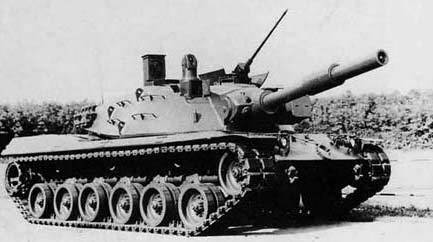
Figure: 8. Three Swedish models of tanks of reckless design (from right to left): casemate gun mount, "zholobnaya" tower (shown in the firing position), monitor and pedestal mount.
It would be a mistake to try to protect the armament and its recoil devices with armor in the position for aiming and firing, as this would lead to large dimensions and weight. The best solution would be to resort to a thick-walled barrel of a tank gun, so that it itself was able to withstand powerful fire weapons, recoil devices should be built into the bottom of the support, where they will be protected by the hull. Only the breech of an existing tank gun must be protected by armor so that it can be used unchanged for these purposes, however, the best result can be achieved if a new design of the gun is developed. The reliability of the breech will depend on the applied automatic drive system, however, the automatic loader must be reliable, since it will be located in the rear of the hull and the crew must be able to access it in the event of a malfunction.
The agility limitations inherent in conventional vehicles will not therefore further affect the gun. Once it is raised, it can be rotated a significant angle, meaning that it must be returned to its original forward position (along the axis) after each shot for reloading with a machine gun mounted in the rear of the hull. Thus, the limit of the limitation of the rotation of such an installation will not be determined by any final (physical) limiter, but to a large extent by the measure of extension (protrusion) of the gun, which will be acceptable when the gun is turned in one direction or the other between the chute and the target. Such a machine will show its best when firing forward with the gun raised and only slightly turned, and its effectiveness will gradually decrease as the steering angle increases.
Aiming accuracy will not depend on the absence of backlash or deformation in the lever system, since the head with aiming and observation devices will be mounted directly above the gun, where it can be checked using the aiming line alignment system. For remote observation, solid optics, fiber optics, television equipment, or, most likely, thermal imagers can be used. The sight head must be capable of independent rotation and vertical movement when the gun mount is raised or lowered, which will allow it to be used both for target detection and identification before it is returned to the gun aiming and aiming position.
Turns at large horizontal angles?
The question arises: what should be the angle of horizontal rotation of the gun provided by this design, and what to do if it turns out to be unacceptable, and the same maneuverability of weapons is required, which is provided by a tank turret when firing many shots on both sides?
One option is to use a simple "lift-and-turn" installation with a machine gun mounted in the body and with a mount that allows the gun to rotate at large angles. The inertial forces of turning the cannon on its support will be only a part of the inertial forces of a conventional turret, and therefore it will not take such a long time to complete the loading cycle - the transition from the target to the "trick". However, an increase in the angle of rotation of the gun can attract the attention of the enemy and his fire can be directed not only along the frontal projection, but also at a much larger target - the side projection.
Various alternatives are offered for supplying ammunition to the gun when it is in the raised position and turned towards the target. Some suggest placing a group of ready shots along the cannon so that they can be used to fire at dangerous targets and then replace them with an automatic loader when the cannon is returned to the zholob. However, in this case, the ammunition will be vulnerable if they are not enclosed in the appropriate armor, and this will lead to an increase in projection, which will make it easier for the enemy to hit the target. Another option provides for the filing of shots at one of the aft part of the hull, using a transportation system similar to that proposed on the Swedish prototype UDES - 19/15 /, but this mechanism will itself be vulnerable to enemy fire when it is raised and directed for installation coaxially with a cannon breech.
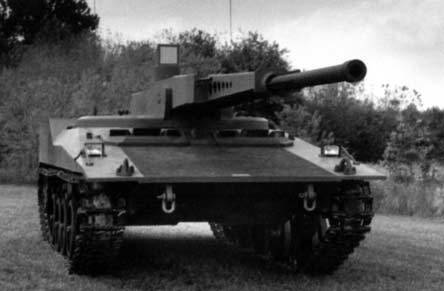
Figure: 9. Views on the design and technical solutions are rapidly changing. A few years have passed since the adoption of the program for the creation of a joint (US and FRG) main tank MBT-70 / KPz-70, in which the entire crew was housed in the turret, now attempts are being made to go in the diametrically opposite direction
Another alternative solution is the use of a more sophisticated system, which involves placing part of the finished shots inside the cannon installation, below the roof level of the hull, where they will rotate with the cannon and charge it when raised, directed towards the target located on the flanks. The geometry of loading shots into the breech does not meet the requirements for the layout of the machine, since they have to move first backward, then forward; guns with a separate chamber will be loaded directly into the breech; back to its back, this problem is simplified. A variant of such a device is implemented in the 75-mm automatic gun ARES with its rotating breech; its use will be facilitated by the introduction of completely combustible casings with parallel walls or even liquid propellants / 16 /.
Further development of structures that provide large angles of rotation and the possibility of circular rotation will be the adoption of rotation of two crew members together with a cannon, which will be mounted on a rising installation in the form of a cut (with a groove) tower / 17 /. This technical solution was carried out on a PACCAR ELKE combat vehicle armed with a 75-mm automatic cannon mounted on a rotating chase of the Sheridan tank chassis / 18 /. However, this represents a return to the direction of the turret tank and will likely be accompanied by the need for a third crew member specifically to drive the vehicle, especially when the turret is rotated. This layout may work well for lightly armored vehicles such as armored self-propelled guns that will fire from behind cover, protruding only a little because of them, but it is less suitable for heavily armored main tanks, which must be ready to act. in conditions of strong enemy fire, and which are better suited to be equipped with more compact reckless installations to increase survivability.
Figure: 10. Latest AAI RDF-LT light tank for rapid deployment forces. Tank with outboard weapons and crew accommodation in the hull (as opposed to the earlier tank with a mini-turret). However, the "sensor" above the gun is only a mock-up, its technology (design) has not yet been sufficiently developed.
"Combined" installation gun
This new type of main tank with its "lift-and-turn" device is a step forward compared to a turret tank, but it is not just a further development of the existing traditional vehicle, it represents a completely new approach to the problem. The main change will consist in the presence of only 2 crew members operating the vehicle, and their placement at stationary workplaces on the juice of the cannon, which will lead to the creation of a vehicle with a minimum volume and thus maximum “survivability”.
The second feature that deserves attention is the completely different placement of the gun relative to the hull compared to its location on turret tanks with a stern power compartment, such as the Soviet T-72 tank or the British Challenger tank. With the new layout, the gun will be installed so that it does not protrude forward or backward from the hull at all, and the muzzle of the gun will describe a smaller circle, so there will be no danger of the barrel sticking into the ground when moving. over obstacles on the battlefield. The introduction of the lifting installation of the cannon will mean that its trunnions, as before, should not be placed high enough to prevent the barrel of the cannon from hitting the front branches of the tracks when the depression angles are given to it. When lifting, the trunnions can be placed lower, so that only the crew observation device will determine the overall height of the vehicle. Some measures should be put in place to control the suspension system, not only to keep the vehicle at the lowest possible height, but also to use it as an emergency guidance device in the event of a plant failure.
The third feature will be the cannon lifting installation itself, in which it will be possible to combine the rotation mechanism of the installation with a set of observation and aiming devices, which will lead to obtaining the advantages inherent in a conventional tower with manual or automatic loading. The subject of further development should be the choice of the loading method - will it be for this automatic, simple loading device, providing direct delivery of shots from the aft part of the hull, or it should be a more sophisticated system so that the gun can be reloaded while being turned on board. While conventional tank cannons can be used in simpler versions of these new cannon mounts, radical redesigns may be required to accommodate more complex mounts that provide significantly larger turning angles.
In these forecasts of inevitable revolutionary changes in the layout of the main tanks, it is taken as a basis that the result largely depends on the successful development of work on the creation of a new type of combined weapons installation, including turning in a horizontal plane, raising weapons, giving elevation and declination angles, automatic loading, anti-recoil properties and aiming in one compact unit of minimal dimensions. In many respects, this combined unit can be compared to a compact, complex, expensive transmission or main rotor head of a military helicopter.
With each improvement in the installation of weapons, which facilitates the use of the gun, the structure of the hull will be simplified more and more and its booking will be strengthened. The role of the hull will be to provide support for weapons and transport them. Thus, a combined weapons installation, once designed, will acquire significant export potential as a product of a high technical level, of great value for installation on simple hulls that can be manufactured separately by other countries.
Are we on the right track?
We can be asked how many functions can be implemented in one combined weapons installation, how they can be combined together in order to obtain the most satisfactory results. For example, does the use of stationary workplaces in the hull mean that the angle of horizontal rotation of the weapon will be limited to 180o? What method should be used to raise the cannon on its mount and how can the recoil devices be lowered and protected so that only the cannon itself is exposed to enemy fire?
A main tank with two crew members, equipped with a rising and rotating weapon installation, will be smaller and more tenacious than any turret vehicle. The small projection area and the short time of its appearance provide an obvious tactical advantage when it becomes possible to fire from behind cover. Tactically, it will be an excellent machine, one of those that can be developed and used.
It can be argued that we are following the right path in developing a tank turret with an automatic loader, in which the experience gained is suitable for use in any external lift-and-turn weapons installation that may be developed in the future. However, we must take into account, at least with the same confidence, that we should not waste time and resources trying to look for ways to improve the outdated tank turret, moreover, we must intensify work on combined weapons installations to create a reckless tank. It has been 20 years since the Russians started work on turrets with automatic loaders, and we would be significantly behind if we followed them, trying to install an automatic loader in a tank turret, and they would develop a reckless tank.
Wouldn't it be short-sighted to search for the introduction of automatic loading into a tank turret and at the same time, would it not be too rash to focus on robotic and autonomous vehicles of the distant future? Wouldn't it be better to focus on the middle solution: building a reckless tank? The opinions of the specialists presented in the reports and articles will support us in resolving this issue.
Literature
1. DH C. Jenkins, Fives-Cail Dabcock introduces a new oscillating turret. - International Defense Review, 3/1985, p. 411.
2. Foreign Science and Technology Center, Charlottesville 'T-72' in Znamenosets in May 1981. Armor Nov.-Dec. 1981, p.30.
3. Wolfgang Flume, 'First light on the LECLERC'. - Military Technology 4/1986, p.82.
4. Robin Fletcher, 'Crewing the Autoloaded Turret', - Defense Attache 5/1936, p.43.
5. RM Ogorkiewicz 'MERKAVA Mk.2.' - ID R. 3/1986, p. 311.
6. Christopher Foss, 'Autoloader contrast for Fairev Hydraulics'. -Jane's Defense Weekly - 25 -TH October, 1986, p. 953.
7. Hoeltzel, Sawka and Cag, 'Tank Test Bed Vehicle'. - Army Research Development% Acquisition Magazine. Nov.-Dec., 1982, p. 19
8. DH C. Jenkins, 'New Concepts in AF Vs - the Swedish Approach'. ID R. 12 1982, p. 1720
9. Christopher Foss, 'Tank Bed Program.' - Jane's Armor and Artillery 1984-85, p.105.
10. Robin Fletcher, 'Low profile MB Ts.' - Defense Attache, 5/1985, P.23.
11. Christopher Foss, 'Swedish Tank Destroyer Developments.' - Jane's - Armor and Artillery 1984-85, P.33.
12. Paul-Werner Krapke, 'A Design Concept for Heavy Tank Destroyer.' - ID R. 3/1983, p. 341.
13. Rolf Hilmes, 'Kampfpanzer - Die Entwicklungen der Nachkrieggazeit.' - Published by Soldat und Technik, 1984, p.102.
14. Christopher Foss, 'New Swedish Main Battle Tank.' - Janer'Armour and Artillery 1984-85, p. 55.
15. DH C. Jenkins, 'Autoloading in Tanks'. - ID R, 7/1984, p.907.
16. Staff Writer, 'BR L. studies liquid propellents.' - Army Research Development & Acquisition Magazine, May-June 1986, p. 25.
17. Robin Fletcher, 'Trunnions on Move.' Armor Jan.-Feb. and Mar.-Apr. 1986.
18. PACCAR 'Elevated Kinetic Energy Weapon Test Bed (ELKE).' - brochure at AU SA Show, Washington, 1984.
ROBIN FLETCHER. CREATING THE TURRETLESS TANK. MILITARY TECHNOLGY, 1987, V. XI, Is.6, p. 140-146.
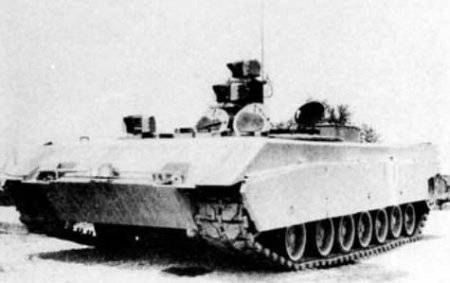

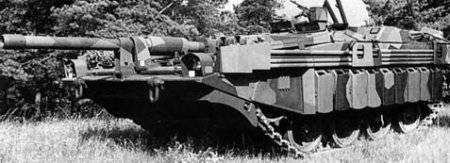
Information